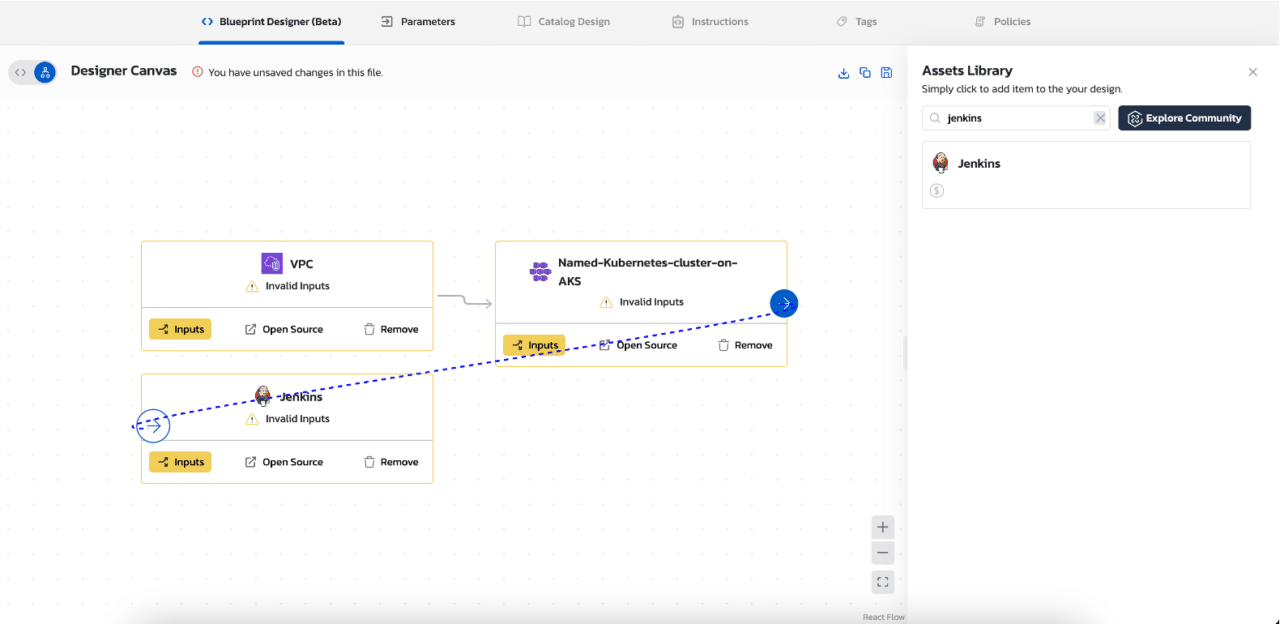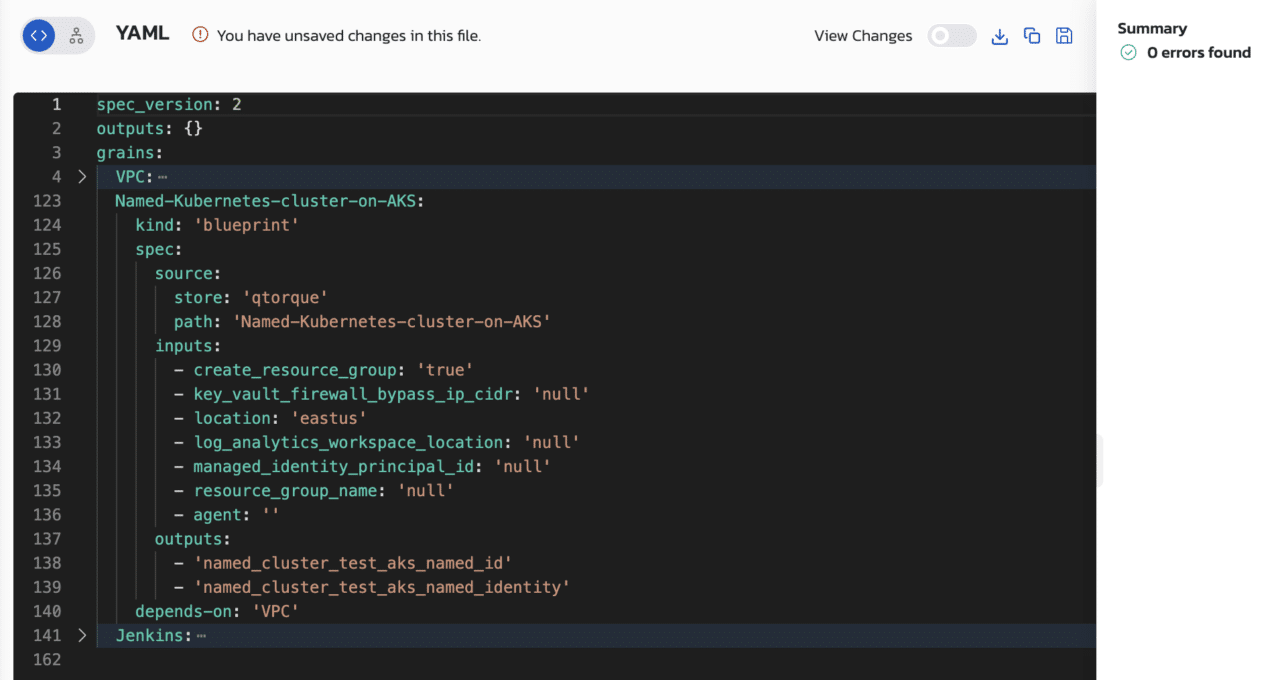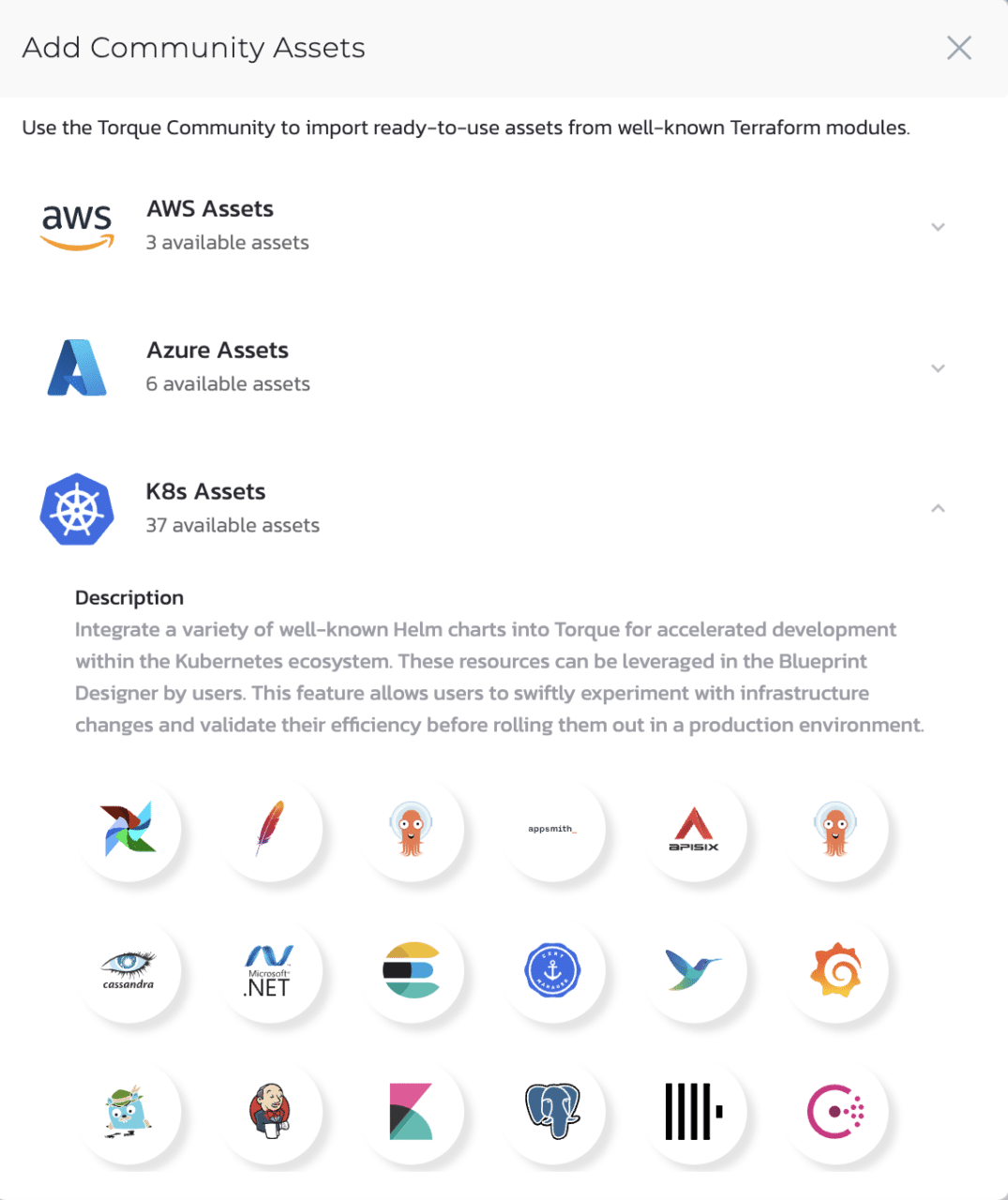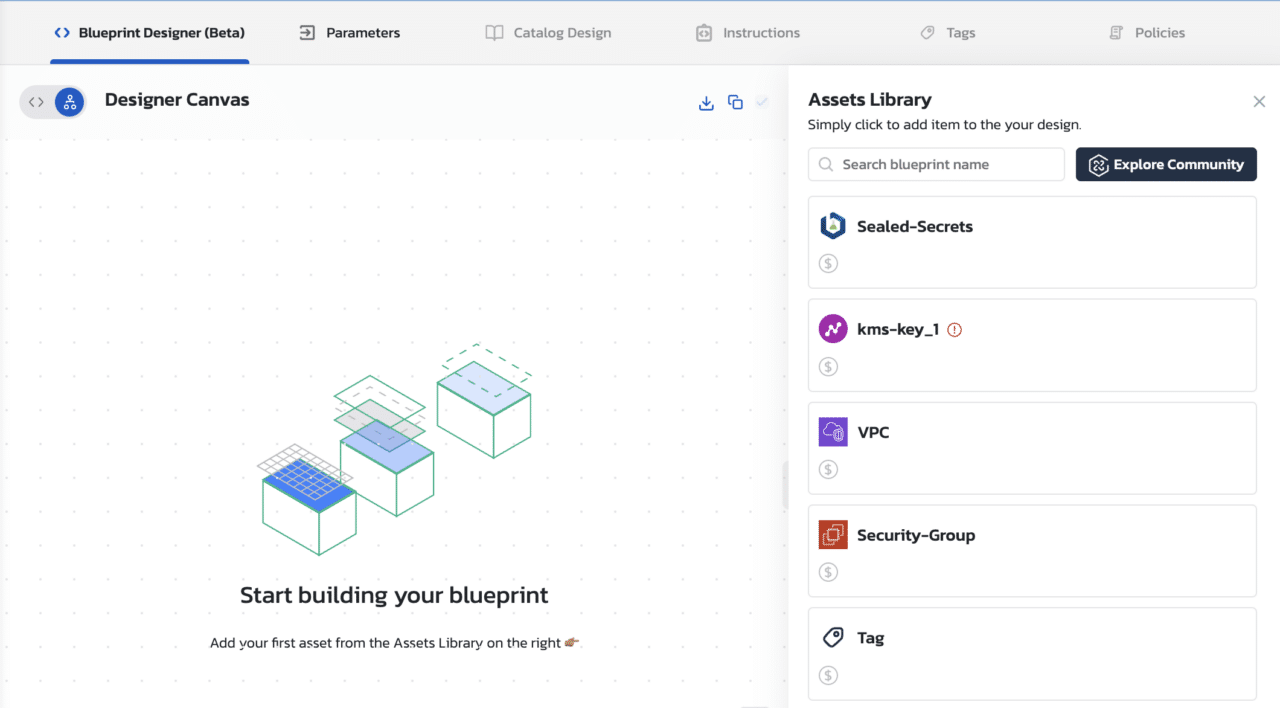Welcome to this month’s roundup of product enhancements for Quali Torque.
If you’re not familiar, Torque is a platform engineering tool that accelerates and simplifies the design, provisioning, and launch of cloud environments for use cases like software development, QA and testing, software demos, and others.
To see our latest product updates in action and submit questions about Torque to our team, join our next Torque Talk webinar session on Wednesday, April 3rd:
Here are this month’s updates:
No-Code Designer Canvas to Auto-Generate Environment Templates
Quali Torque provides a self-service model for provisioning environments, through which users can provision infrastructure by clicking “Launch” on the template for that environment (which we call “blueprints” in the platform). This initiates the plan defined in the blueprint—which is defined as a YAML file in Torque—to generate the output that the user needs, such as a staging environment for an application.
Torque administrators create these templates using the Infrastructure as Code (IaC) and Kubernetes resources in their Git repositories. Torque discovers the resource configurations in each IaC module in the repository and generates a new YAML in the platform. This normalizes each cloud resource configuration regardless of the IaC tool defining it or cloud platform deploying it so administrators can use these resources to create their environment blueprints.
Torque’s new Designer Canvas simplifies the process of creating blueprints.
Those with permissions to create environment blueprints can find their IaC modules and ecosystem tools—such as Jenkins and ArgoCD—in the Designer Canvas.
Clicking “Add” on an asset will bring it into their new environment. Connecting each asset will define dependencies between each. And selecting “Inputs” on each asset will bring up a basic form to define the parameters for each component.

This design process will automatically generate a new source file defining all the code for the environment in the Canvas. Once complete, admins can launch the environment and add it to the catalog where those with end user permission can launch it.

This approach not only accelerates the process of creating new environment blueprints—it also empowers additional users to do so regardless of their expertise in IaC tooling or cloud-native technologies.
Watch this brief demo to see the Designer Canvas in action:

To start using the Designer Canvas, navigate to “Blueprints” and select “New Blueprint” in the top-right corner of the screen.
Out-of-the-Box Templates for Infrastructure, Kubernetes, & Torque Administration Resources
Traditionally, creating an environment blueprint in Torque required connecting a repository and generating assets from the IaC modules within it.
As part of the Designer Canvas experience, Torque admins can now leverage out-of-the-box infrastructure components, Kubernetes ecosystem resources, and templates for Torque administration settings.
This means that Torque admins can now create blueprints for environments regardless of whether they have the individual infrastructure components defined in IaC.

For example, an admin can define and launch a new Kubernetes cluster by:
- Adding AKS and VPC resources as well as a template for Jenkins via Torque’s out-of-the-box Community Assets
- Connecting each asset in the Canvas to set the dependencies for the environment
- Specifying the parameters for each asset using the simple form in the Canvas
Torque will then generate a YAML for the environment blueprint, which the user can then save and launch to provision the Kubernetes cluster they defined.
While Torque still supports user-provided infrastructure, this update enables Torque users to create and launch new environments from scratch.
To get started, create a new blueprint in Torque and select “Explore Community” in the Asset Library to view the available resources and start adding them to your blueprint.

Sync SCIM to Align Your Identity Provider Settings with User Access in Torque
Torque manages user access via Spaces—where only certain users can create and launch environments—and role-based permissions.
To make it easier for Torque admins to manage access, Torque will now sync with System for Cross-Domain Identity Management (SCIM) via a third-party Identity Provider, such as Okta and Azure Active Directory.
This allows administrators to create and assign new users to specific Spaces and environments in Torque directly via their Identity Provider, while also ensuring that all users who are removed from their Identity Provider are also removed from Torque automatically.
Check out our documentation to learn more about support for SCIM.
Execute Commands via AWS CLI, KubeCTL, Git, & Other Tools
In Torque, the Shell Grain is used to automate bash/python3 commands as part of an environment’s launch and/or teardown, such as validating or backing up resources.
We recently updated the Shell Grain to include support for the following tools:
- curl
- wget
- jq
- git
- zip
- unzip
- Kubectl
- AWS CLI
You can learn more about leveraging the Shell Grain in our documentation.
To see these and other Torque features in action, join our next monthly Torque Talk webinar on Wednesday, April 3rd.



